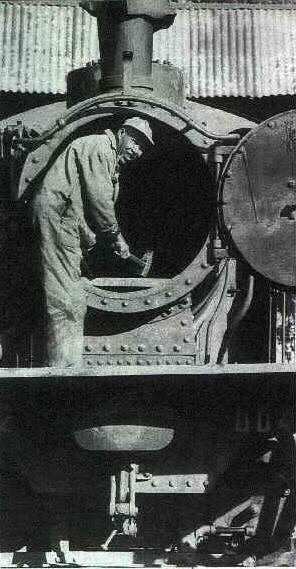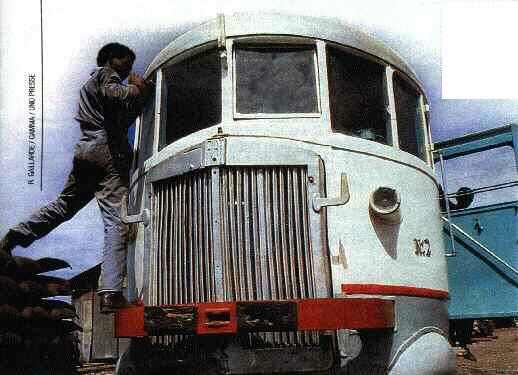| It was so that in 1995 it was ordered to the paysants
and to the former soldiers to collect all the material spread on the battle
fields of the thirty years war.
Unbelievably, the rails and the sleepers with the stamp Ilva Savona showed out again, carried by an human chain aware of participating to the rebirth of a country. The formar soldiers started to lay down the rails on the old track, meter after meter, starting from Massaua. “We have done seventy kilometers, we are almost at Ghinda, the halfway station”, says Ammanuel. But the “almost” means weeks if not months of a beastly effort. The works are now between Mai Atal and Damas, in a lunar landscape, made out of stones, thorny bushes, and some camel; one proceeds a few meters a day, all by arms strenght: one section of rail of nine meters weighs three tons. But to recover into operation the Bredas, the Ansaldo and the Littorine, out of production since tens of years, stong will and force could not be enough. The government has recalled into service the only men in the world capable of disassembling and reassembling “by heart” that vintage material: the railmen “surplus” of the italian era. Slightly less than fifty have answered the call: the youngest is seventy years old. But the will and the memory are still strong.  When
Abraha Ikuar Giulio started to work as a coppersmith in the workshop of
the Asmara station, it was in 1935. When
Abraha Ikuar Giulio started to work as a coppersmith in the workshop of
the Asmara station, it was in 1935.
On the railway ran 38 trains a day, loaded with men and materials for the Etiopia conquest. Seium Baraki arrived later, on the onset of the world war that should end the “Africa Orientale Italiana”. “I am here since 1940, thirteen March 1940” he specifies with the precision of a good clerk. “ I was hired by Oreste Maranzana from Bologna” he remembers, confident that the name of his old boss be known in Italy. He is disappointed in realizing that the to-day italians do not know each other and do not remember a colonial railman like Oreste Maranzana from Bologna; he takes confort from the tools returned to the ancient efficiency. “Pressa, ghiera, tornio, paranco, puleggia, incudine [ press, ferrule, lathe, crane, pulley, anvil ] “ he lists in italian, like if Oreste Maranzana would hear and judge him. |
 |
 |
Engineers of the time machine.
Up: Osman Akies, 76 years: he was engineer on this old Breda locomotive during the italian administration. On the left a vintage Littorina: alone, Tekné Kirané rebuilt two of them. |
|
Prev Page |
Next Page |

Home |

Scrapbook |
| Who | What | Why | When | Where |